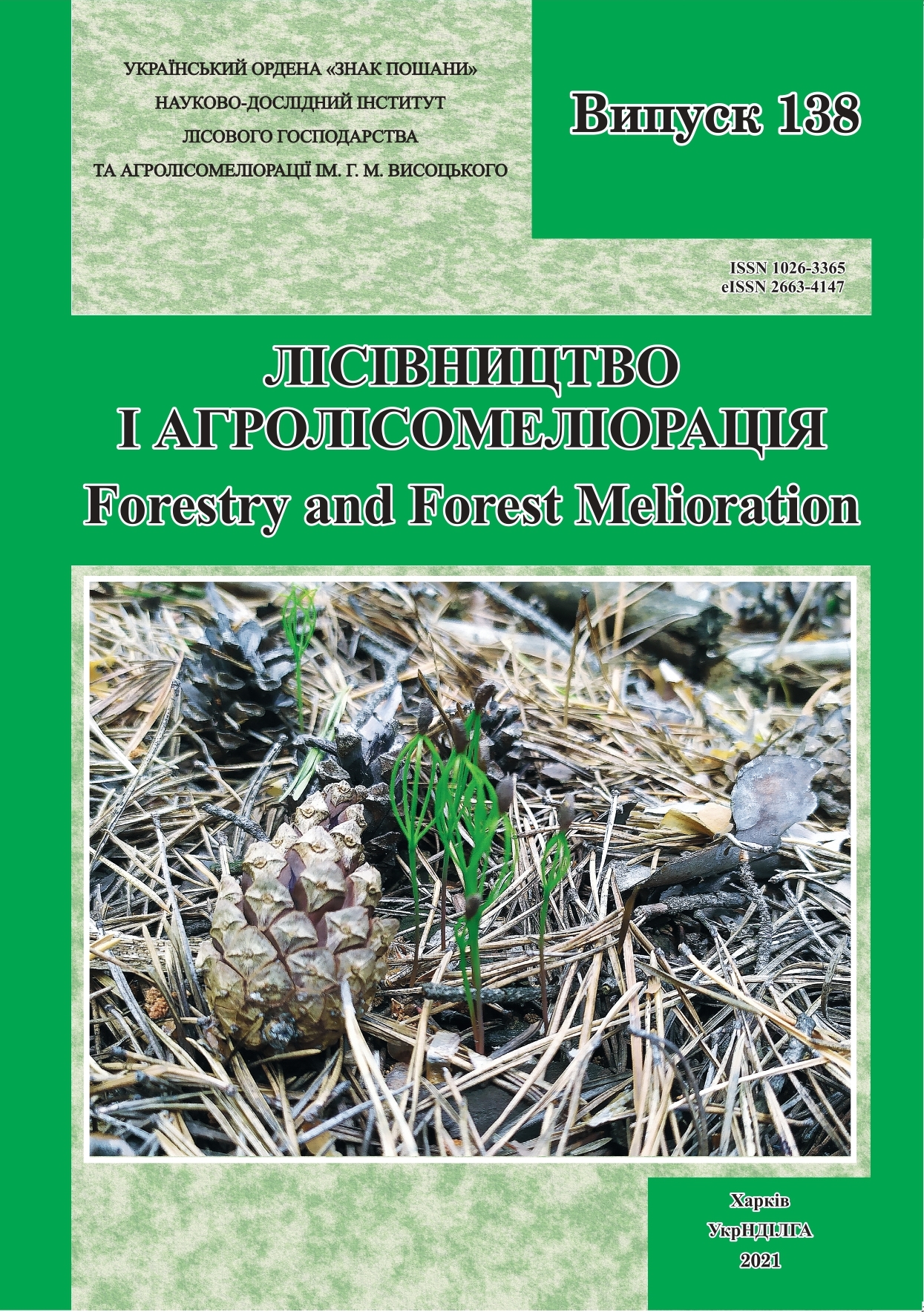Abstract
Introduction
Features of tending felling carried out in oak forests depend on the species composition, stand age and forest site type. Despite the existing studies on the felling specificities in the oak forests within Left-Bank Forest-Steppe, the issues regarding their intensity and felling interval are still relevant.
The aim of the study was to determine how tending felling of different intensities influence the stand characteristics, health condition and assortment structure in planted oak stands within Left-Bank Forest-Steppe in Ukraine.
Materials and Methods
The study was carried out at a permanent multivariant research object established in the Neskuchanske Forestry within the Trostyanets State Forest Enterprise, Sumy Region, in a 9-year-old seeded oak stand.
The experiment consisted of four sections, 0.2 ha each, with different intensity of tending felling (thinning): section A – control (thinning intensity was 1%); section B – low-intensity thinning (12%); section C – moderate-intensity thinning (16%); section D – high-intensity thinning (32%).
The last survey was conducted in the summer of 2020. At the time of the study, the age of the oak stand was 72 years. The oak stand was described according to the methods generally accepted in forestry, forest science and forest assessment.
Results
The results of the study in 2020 showed that single-layer, mixed-species, high-yield-class and high-stocking stands had been formed in all sections of the experiment. The relative density of stocking of the stands in the sections varied, depending on the intensity of care felling, from 0.71 in section A (control) to 1.0 in section D, where high-intensity thinning was carried out.
The average diameter (at the age of 72) ranged from 30.9 cm (section A) to 31.8 cm (sections B and D) for oak and from 36.4 cm (section D) to 38.7 cm (section B) for ash.
The oak height was the largest in the control (section A) and section of low-intensity thinning (section B) – 28.4 m, while it was the smallest in the sections of moderate- and heavy-intensity thinning (sections C and D) – 28.1 m. The greatest ash height was recorded in the sections of low- and moderate-intensity thinning (sections B and C) – 29.3 m each, and the smallest one was noted in the control (section A) – 29.0 m.
The lowest stand volume was observed in the control (section A – 313 m3·ha-1), while the highest one was observed in the sections with low (section B – 413 m3·ha-1) and heavy (section D – 429 m3·ha-1) thinning intensity.
The largest percentage of commercial trunks of economically valuable species was noted in the control (section A – 82%), and the smallest one in the section with moderate thinning (section C – 70%).
The largest proportion of healthy trees (1st health condition category) was observed in the section with low-intensity thinning (section B – 52%), while the smallest one was found in the section with moderate-intensity thinning (section C – 4%).
Conclusions
The proposed thinning technology enabled a formation of mixed oak stands with a relative density of stocking of 0.7 and above, growing in Ia quality class. The technology contributed to the accumulation of significant volumes of economically important species, namely English oak and common ash. Studies of the stand structure, growth specificities and condition as well as the peculiarities of the formation depending on the intensity of tending felling are important for determining the optimal cultivation regimes for oak stands planted in Left-Bank Forest-Steppe conditions.

This work is licensed under a Creative Commons Attribution 4.0 International License.
